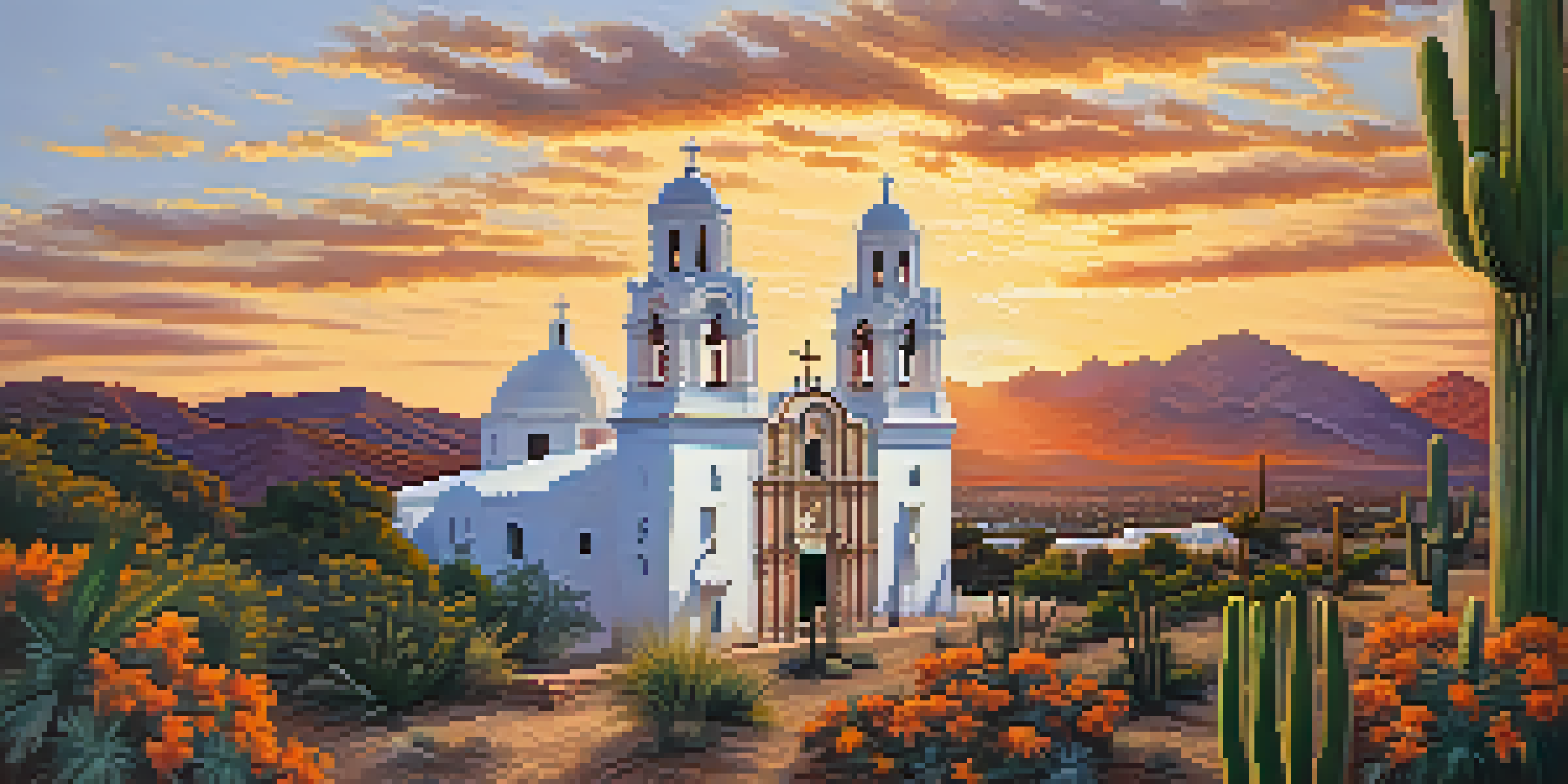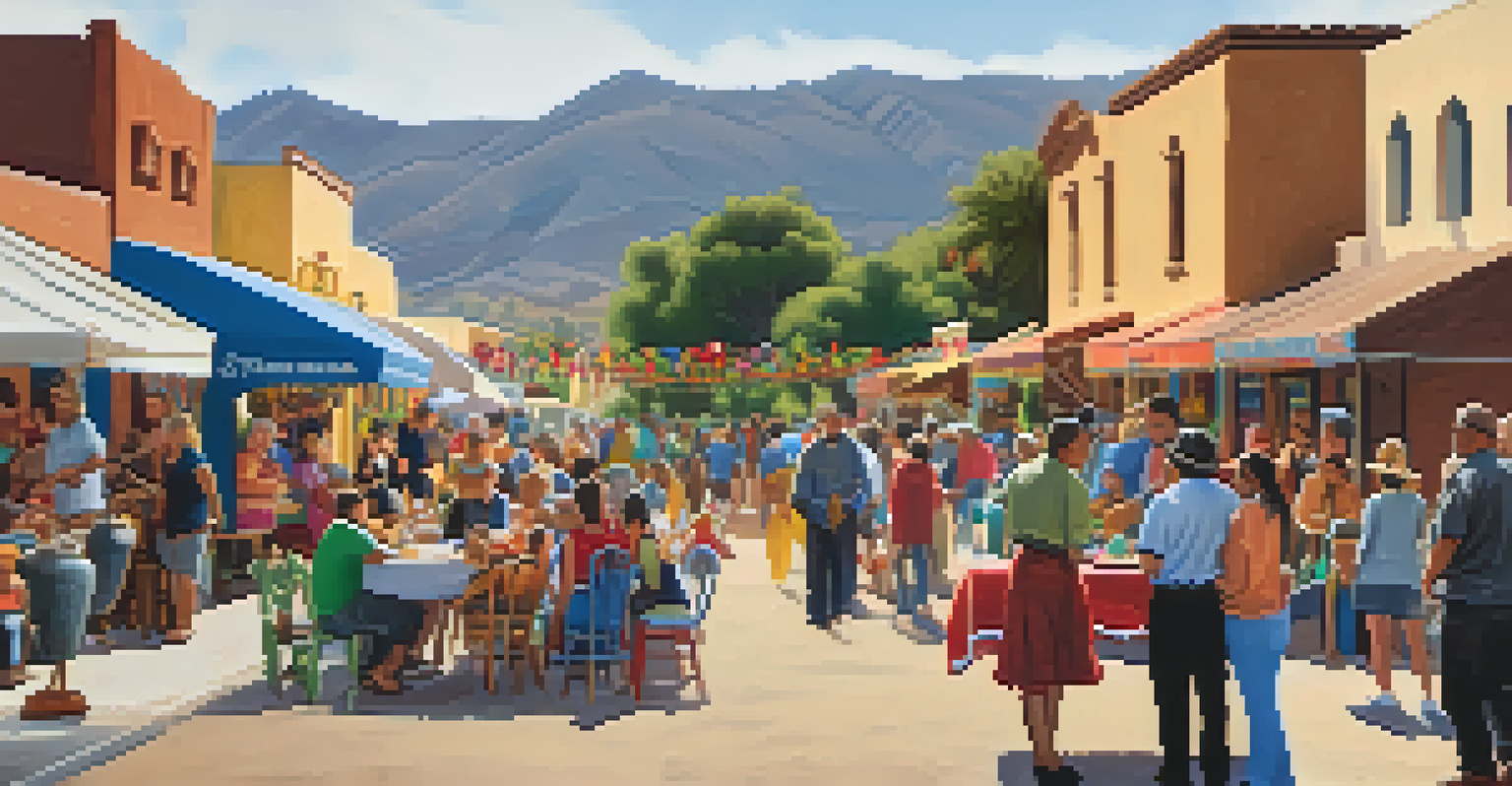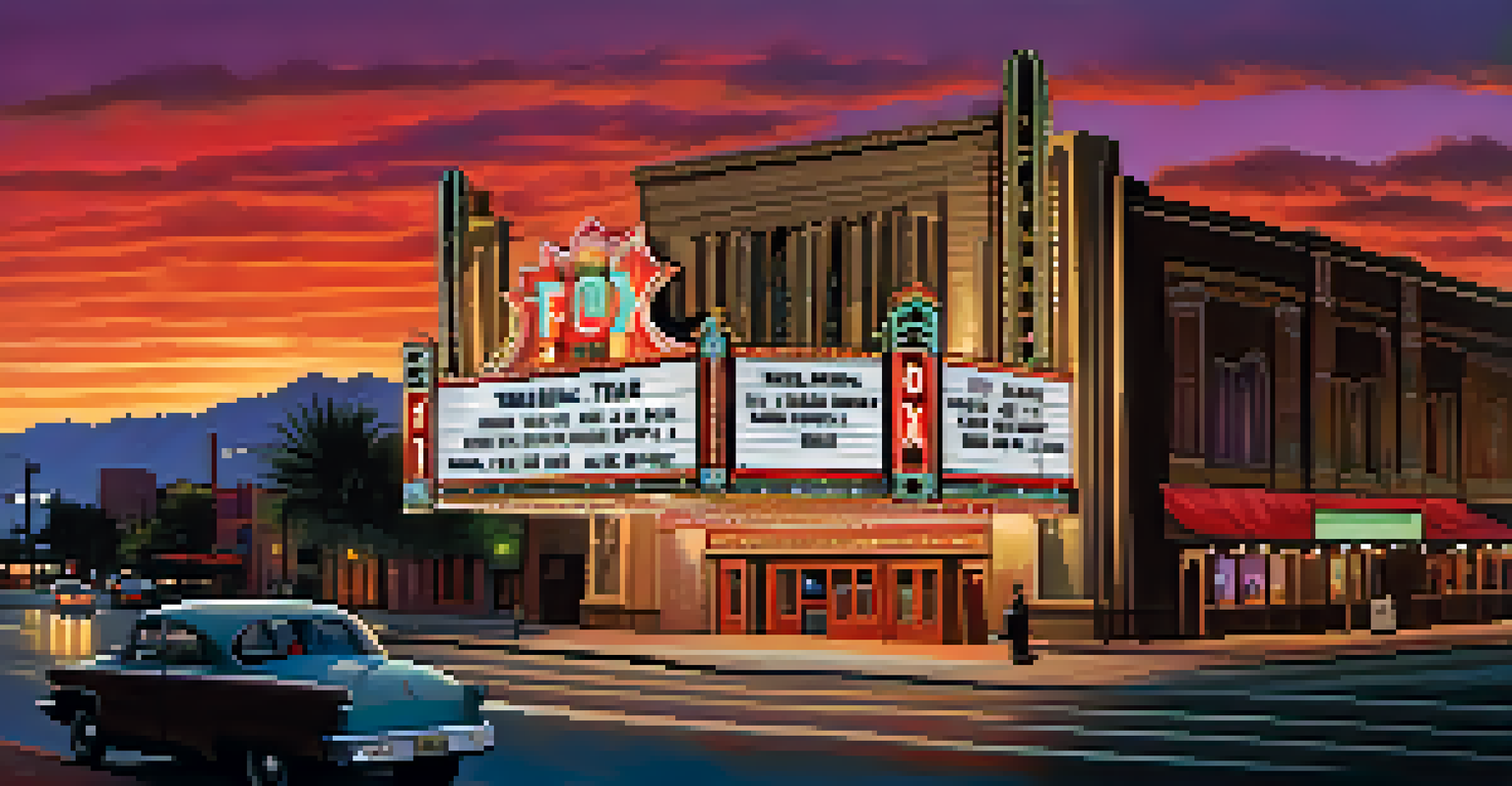Historical Preservation Efforts in Tucson's Architectural Sites

The Importance of Historical Preservation in Tucson
Historical preservation is crucial for maintaining Tucson's unique identity. The city's architecture tells stories of its diverse cultures and rich history, from Native American roots to Spanish influences. By preserving these sites, Tucson not only honors its past but also enhances community pride and tourism.
Preservation is a form of respect for the past and a way to ensure that future generations can learn from it.
In a rapidly changing urban landscape, historical sites serve as tangible connections to our heritage. They remind us of the architectural styles and innovations that have shaped our environment. As residents and visitors explore these landmarks, they gain insights into the lives and experiences of those who came before us.
Moreover, preserving these architectural gems can have economic benefits. Historic sites often attract tourists, providing a boost to local businesses. This intersection of history and economy underscores the significance of preservation efforts in Tucson.
Key Architectural Sites in Tucson
Tucson is home to a variety of architectural sites that showcase its rich history. Notable examples include the Mission San Xavier del Bac, a stunning 18th-century Spanish mission, and the iconic Fox Theatre, which has been lovingly restored to its former glory. Each of these sites tells a unique story that contributes to the tapestry of Tucson's past.

Another gem is the El Presidio Historic District, where visitors can walk among adobe homes and historic buildings, feeling the essence of Tucson's early days. The architecture reflects the cultural influences that have shaped the city, from Spanish colonial to modernist designs. These sites are not just buildings; they are representations of the community's evolution.
Preserving Tucson's Unique Identity
Historical preservation is vital for maintaining Tucson's distinct character and enhancing community pride.
By highlighting these architectural treasures, Tucson fosters a sense of belonging and connection among its residents. The preservation of these sites is a collective effort that brings people together, encouraging pride in their shared heritage.
Community Involvement in Preservation Efforts
Community involvement is a cornerstone of Tucson's historical preservation initiatives. Local organizations, such as the Tucson Historic Preservation Foundation, work tirelessly to educate residents about the importance of maintaining their architectural heritage. Through workshops, events, and advocacy, they empower community members to take an active role in preservation.
History is not a burden on the memory but an illumination of the soul.
Neighborhood groups also play a vital part in these efforts by rallying support for local historic sites. They advocate for policies that protect these buildings and often organize events to celebrate their history. This grassroots approach creates a sense of ownership among residents, fostering a deep connection to their neighborhoods.
Collaboration between local governments and community members further enhances preservation efforts. By working together, they can secure funding, develop preservation plans, and ensure that Tucson's architectural heritage is safeguarded for future generations.
The Role of Local Government in Preservation
Local government plays a critical role in preserving Tucson's architectural heritage. Through zoning laws and historic designation processes, they protect significant sites from demolition or inappropriate alterations. This regulatory framework ensures that Tucson's unique architectural character is maintained.
Additionally, the city offers grants and incentives to property owners who wish to preserve their historic buildings. These financial tools make it more feasible for homeowners and businesses to invest in restoration, ensuring that these sites remain viable parts of the community. Such initiatives reflect a commitment to blending preservation with progress.
Community Drives Preservation Efforts
Local organizations and neighborhood groups play an essential role in advocating for and educating residents about the importance of preserving Tucson's architectural heritage.
Moreover, local government engages in educational outreach, helping residents understand the value of their historical sites. By fostering a culture of appreciation for architectural heritage, Tucson can create a supportive environment for preservation efforts.
Challenges to Preservation in a Growing City
As Tucson continues to grow, preservationists face significant challenges. Rapid urban development often threatens historic sites, leading to potential demolition or neglect. Striking a balance between modern needs and historical integrity requires thoughtful planning and community engagement.
Another challenge is the financial aspect of preservation. Restoring and maintaining historic buildings can be costly, and funding is often limited. This financial strain can deter property owners from pursuing restoration projects, putting more architectural treasures at risk.
Despite these challenges, Tucson remains resilient. With strong community support and dedicated organizations, there is hope for overcoming obstacles and ensuring that the city's historical sites are protected for future generations.
Innovative Approaches to Preservation
In response to challenges, Tucson has embraced innovative approaches to preservation. One such example is adaptive reuse, where historic buildings are repurposed for modern uses while retaining their architectural integrity. This method not only preserves history but also breathes new life into old structures.
Another approach is the integration of technology in preservation efforts. Digital documentation and 3D modeling can aid in restoration projects, providing accurate representations of the original architecture. This technology allows for more precise preservation efforts, ensuring that the essence of the structure is maintained.
Innovative Solutions for Preservation
Tucson embraces adaptive reuse and technology to ensure that historic buildings can be modernized while preserving their original essence.
These innovative strategies demonstrate that preservation can coexist with progress. As Tucson navigates the future, these approaches help secure its architectural legacy while meeting the needs of a growing community.
Looking Ahead: The Future of Preservation in Tucson
As we look to the future, the importance of historical preservation in Tucson cannot be overstated. Ongoing efforts will be essential to safeguarding the city's architectural heritage amidst growth and change. Engaging the community, local government, and preservation organizations will create a collaborative approach that fosters success.
Future preservation initiatives may also focus on expanding educational programs to raise awareness about the significance of Tucson's architectural sites. By instilling appreciation among younger generations, the hope is to cultivate future advocates for preservation.

Ultimately, Tucson's architectural preservation efforts are a testament to the community's commitment to honoring its past while embracing the future. The journey ahead may present challenges, but with dedication and innovation, Tucson's rich history will continue to thrive.